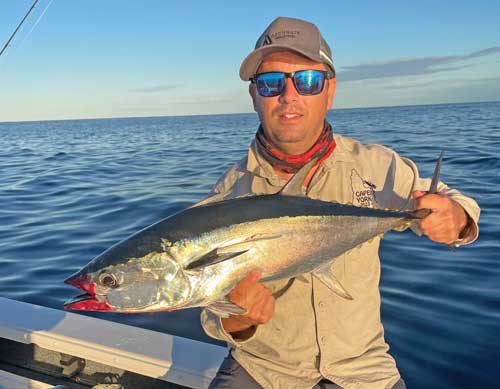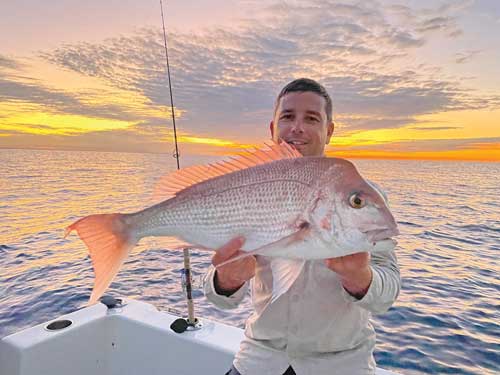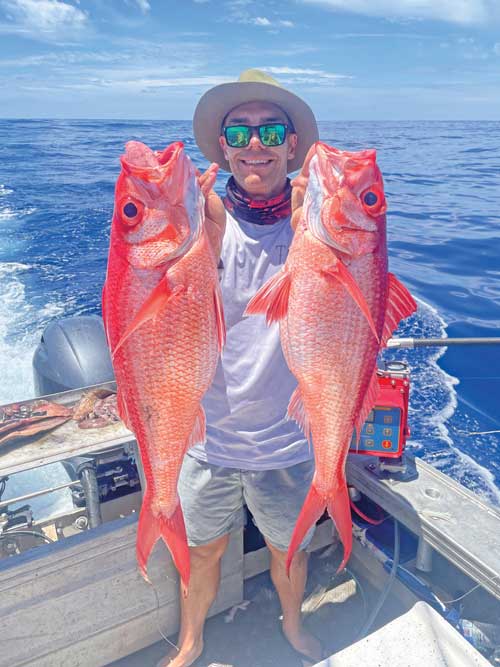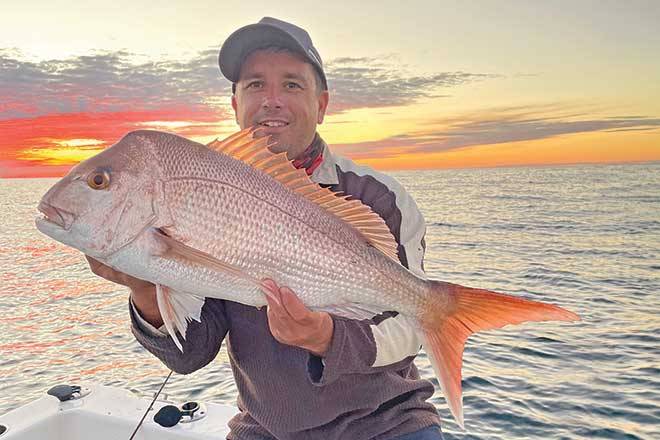If you told me I could fish for only one month each year for the rest of my life, I reckon I’d choose September.
Throughout southeast Queensland, the cool westerly wind of August indicates that the water temperature is relatively low, translating to species such as tailor and snapper still about in good numbers.
Warmer sunny days are conducive to offshore runs and the cooler water means the strong summertime currents haven’t really kicked in.
This signifies that your trophy reef species – red emperor, sweetlip, tuskfish and coral trout – are all within reach.
In the estuaries, large female flathead typically head to deeper water to spawn and can be targeted where rivers meet the ocean, all the way from the Gold Coast to central Queensland.
Elbow-slapping summer whiting are well worth targeting, particularly around a full moon at night in rivers such as the Nerang and Maroochy and throughout the Pumicestone Passage.
As the month goes by, summer species will start to come out to play.
Mangrove jack in the estuaries and inshore pelagic including mackerel and tuna are at the top of the list.
Yep, as you can tell, September gets me excited!
Let’s explore a few opportunities worth capitalising on this month.
It’s fair to say that it’s too soon to understand the full impact that the July-August snapper closure has had on stocks.

If the snapper fishery goes from strength to strength, like our post size-limit mulloway fishery, it’ll be exciting times.
Until then though, I’ll admit, it’s a little painful taking a month off from chasing these fish and tasty pearl perch at the height of peak season.
Anyway, that’s all behind us now and they’re fair game once again.
If the snapper fishing only days out from the closure in July was anything to go by, there should be some hot action in September.
As I’ve said many times before, snapper are such a great fish to target in so many ways.
Whether it’s shallow or deep water, bait or lures, snapper are always a great option.
The key to catching them consistently is all about low light periods – early morning and late afternoon – and fishing as light as possible.
Snapper will leave the bottom to feed, which makes sinker and lure weight critically important.
Lightly weighted bait or soft dropping vibes and plastics will often entice a strike from a hungry snapper.
Employing a berley trail can be an effective way of enticing them to feed.

In the deeper water, pearlies are also back on the menu.
Personally, they’re in my top three table fish, so I love catching them.
They’ll respond to plastics, jigs and vibes but are commonly caught on bait – dead or alive.
As I’ve eluded too, the September options don’t end there.
It’s a great month for chasing red emperor and other predatory reef fish.
Concentrate your efforts in depths of 45-75m of water, fishing live bait or fresh strips of flesh such as mullet, tailor or squid.
Variable wind conditions will allow the deep-water brigade to do their thing as well.
Deep dropping in 120-500m has becoming increasingly popular, given the technological advancement in sounders and electric reels over the past decade.
Species such as bar cod, bass grouper and flame snapper are all extremely tasty and have become much more attainable for recreational anglers.
Snapper and pearlies are quite commonly caught in the deeper water as well.
On the beaches, there’s been a great run of tailor throughout southeast Queensland and these fish will be around for the majority of September, especially if the water temperature stays cool.

Like many, I’ll be chasing a few of these fish off the beaches of K’gari during the month.
Late August and September remain about the best time of year to chase big whiting in the estuaries, particularly those on the Gold Coast.
The Nerang and Coomera rivers, as well as the Broadwater, have long been incredibly reliable systems for big spawning summer whiting.
Any fish over 40cm in length is a trophy and now is the time to get one.
Live natural bait is normally a must if you want to tempt a big old whiting.
The Gold Coast Flathead Classic takes place later this month.
It’s a competition that has gone from strength to strength over the years and the number of flatties caught and released over the weekend – truly unbelievable.
It’s a great advert for catch-and-release competition fishing and an example of how we can all work together to sustainably manage fish stocks of a bread-and-butter species that is accessible to all.
The bigger female models will typically make their way to the river mouths to spawn at this time of year.
That said, some of the shallow-water flathead drone footage kicking about on social media is insane and shows that the bigger models can certainly be found in knee-deep water.
The size of the swimbaits being thrown at flatties these days is also incredible, with no lure seemingly too big these days.
Well, I’m just about done typing.
September is on the doorstep and I need to get the boats and gear ready!
Catch you out there!
 Bush ‘n Beach Fishing Magazine Location reports & tips for fishing, boating, camping, kayaking, 4WDing in Queensland and Northern NSW
Bush ‘n Beach Fishing Magazine Location reports & tips for fishing, boating, camping, kayaking, 4WDing in Queensland and Northern NSW









